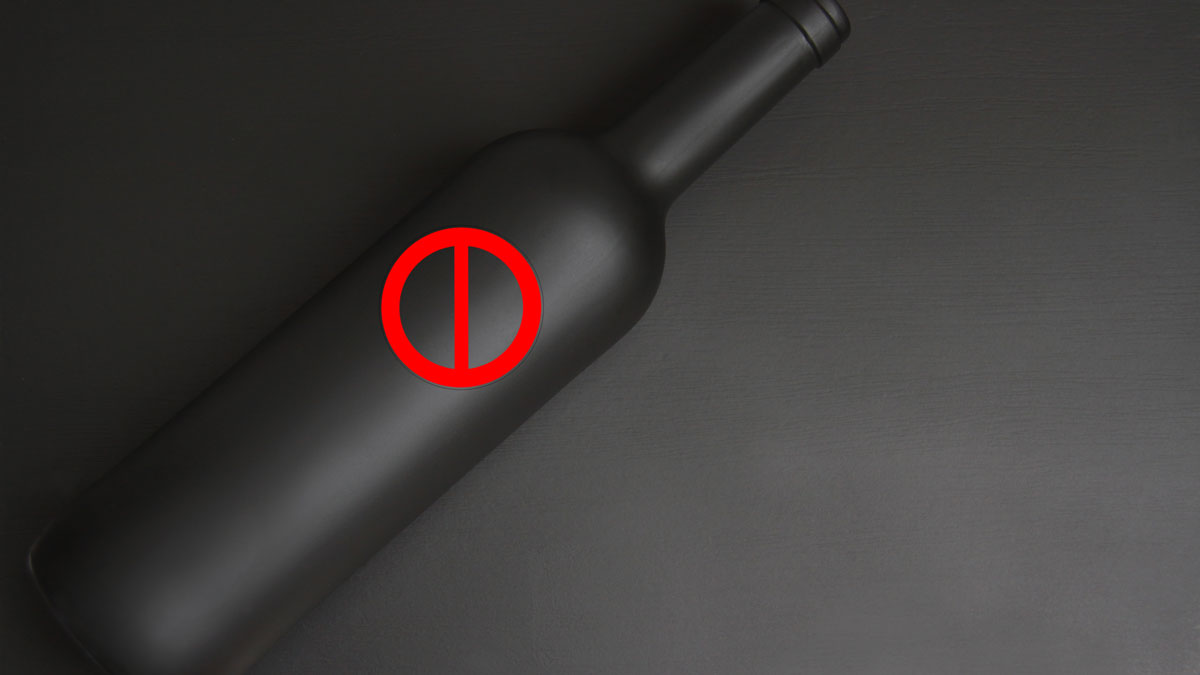Substances | 4 min read
What Is Denatured Alcohol? Everything You Need To Know
Medically Reviewed By

On December 11, 2023
Written By
On December 11, 2023

What you will learn
- Denatured alcohol is ethanol with additives to discourage recreational consumption.
- Denatured alcohol has household and industrial uses and can be produced more cheaply than drinking alcohol.
- The toxic additives in denatured alcohol make it extremely dangerous to drink.
- Consuming denatured alcohol could lead to blindness or death.
- For some, denatured alcohol can be a tempting alternative if drinking alcohol is limited.
Denatured alcohol, often abbreviated as alcohol “denat” or SD Alcohol on labels, is ethanol that’s been mixed with additives as a low-cost solvent or fuel. It’s found in many household products, including paint thinner, cleaning products, and hand sanitizer.
With these additives, denatured alcohol is poisonous, bad tasting, foul smelling, or nauseating to discourage recreational consumption. Doing so could lead to fatal alcohol poisoning.
What Is Denatured Alcohol?
Denatured alcohol, also known as methylated spirits, is ethanol that contains additives that discourage drinking. These chemicals, known as denaturants, make denatured alcohol unpleasant to smell, taste, and ingest.[1] Some of these include methanol, benzene, pyridine, castor oil, gasoline, isopropyl alcohol, and acetone.
Denatured alcohol is often used as a lower-cost solvent or fuel for home or industrial use. Introducing these additives not only discourages consumption but it puts denatured alcohol in a different tax category – making it cheaper to produce than liquor.
Is Denatured Alcohol Safe to Drink?
No, denatured alcohol is never safe to drink. Ethanol itself, the pure form of drinking alcohol, isn’t immediately toxic. During the denaturing process, the property in alcohol that makes it consumable is removed, making it much, much stronger than the alcohol you can drink. For example, the average distilled spirit is about 40% alcohol by volume (ABV). Denatured alcohol can range from 70% to 99%. Consuming it can lead to blindness or rapid onset of alcohol poisoning, which can be fatal.
In fact, during Prohibition, moonshiners tried to remove the toxic additives from denatured alcohol by re-purifying it. The government has changed the denaturing formula, doubling how poisonous the alcohol became. Many moonshiners went blind as a result.[2]
People struggling with alcohol use disorder (AUD) may seek out denatured alcohol as an alternative source if they can’t access drinking alcohol.[3] This is not only a hindrance to recovery but a much more dangerous solution to alcohol cravings.
Why Is Alcohol Denatured?
Denatured alcohol has no advantages for cleaning, fuel, or any other use compared to ethanol. The additives that make it poisonous and unfit for consumption allow denatured alcohol to be produced in a cost-effective manner for household and industrial uses without the burden of the heavy taxes on beverage alcohol.
Without denaturing, some people would drink alcohol for commercial use to avoid the high cost of beverage alcohol.
Denatured Alcohol Uses
Despite being poisonous to drink, denatured alcohol is an essential ingredient in many household and industrial products. It’s safe when used as directed.
Here are some products that contain denatured alcohol:
Cleaning Agents
Denatured alcohol has antiseptic properties, just like ethanol. It can be used on a range of surfaces, including wood, plastic, and glass, and evaporates quickly to leave no marks or streaks. Alcohol also works as a solvent to dissolve grease and stains.
Medical Disinfectants
Aside from household cleaning products, denatured alcohol is an essential component of medical disinfectants used on surfaces. It not only kills the bacteria that are already there but prevents more bacteria from growing.
Cosmetics
Denatured alcohol is an ideal preservative for cosmetic use to inhibit the spread of pathogens that can cause disease and spoil the product. When denatured alcohol is introduced to a cosmetic, it drives the water out and makes it an inhospitable environment for pathogens to grow.
Specimen Preservation
Preserved specimens are a key component of scientific research. With denatured alcohol, organisms can be preserved for long periods in ideal conditions as the alcohol kills bacteria and drives out the water from the tissue.
Shellac
Shellac is a natural resin used to finish woodwork. Denatured alcohol is combined with shellac to create a sticky varnish that can be applied to wood, giving it a lustrous finish. It also protects against scratches and sun damage.
Solvents
Denatured alcohol is one of the most widely available solvents and can dissolve glue, wax, grease, and other substances. It’s safe to use on a variety of surfaces, including furniture and clothing.
Fuel
Denatured alcohol is cheap and easy to transport, so it’s often used as fuel for small camping stoves and oil heaters. It burns cleanly and can be extinguished easily with water. That said, denatured alcohol can produce colorless flames that can lead to burns.
Denatured Alcohol vs. Isopropyl Alcohol
Denatured alcohol and isopropyl alcohol have similar uses, but they’re different chemicals. The chemical formula of ethyl is C2H6O, and the formula for isopropyl alcohol is C3H8O. Denatured alcohol is ethyl alcohol, or ethanol, with toxic additives that discourage consumption. The most common additive is methanol, which is highly toxic when consumed. People have died from consuming as little as 0.5 ounces of 40% methanol.[4]
Isopropyl alcohol, commonly known as rubbing alcohol, is a type of alcohol that’s usually found in 70% concentration. It’s often found in hand sanitizers and cleaning solutions, though it may also be used in cosmetics and personal care products.
Like denatured alcohol, isopropyl alcohol isn’t safe to drink. Though it’s not often fatal like denatured alcohol, it can cause serious illness. Children are at the greatest risk of significant illness or death from ingestion of isopropyl alcohol.
Of all the toxic alcohol ingestion reported to the Poison Control Center each year, isopropyl alcohol is the most common.[5]
What to Do If You Ingest Denatured Alcohol
Denatured alcohol is not fit for human consumption. Even small amounts can lead to toxicity or death.
If you or someone you know accidentally consumes denatured alcohol, contact the Poison Control Center for guidance. Call 911 if you notice seizures, difficulty breathing, or unconsciousness.
The effects of denatured alcohol can be more severe in children under six months of age or adults older than 79 years, as well as pregnant women.
The symptoms of alcohol poisoning from denatured alcohol can include:[6]
- Dizziness
- Low blood pressure
- Low body temperature
- Rapid heart rate
- Slow breathing
- Nausea
- Stomach pain
- Throat pain
- Slurred speech
- Vomiting
- Coma
In some cases, people may drink denatured alcohol intending to self-harm. If you believe someone is trying to self-harm using denatured alcohol, even if they haven’t ingested any, it’s important to seek emergency medical attention.
Alcohol Use Disorder Treatment
Denatured alcohol is found in many household products, but it’s not the same as drinking alcohol. Because of the toxic additives, denatured alcohol is extremely dangerous to drink and can lead to blindness, serious illness, or death.
If you or a loved one are struggling with alcohol abuse or alcohol dependence, you’re not alone. To learn more about alcohol treatment, see these resources:
Frequently Asked Questions About Denatured Alcohol
Rubbing alcohol, or isopropyl alcohol, and denatured alcohol are used similarly, but they aren’t the same types of alcohol. Neither is safe to drink, however.
There are several differences between denatured alcohol and mineral spirits, but the biggest one is that denatured alcohol is made from ethanol, which is derived from plants. Mineral spirits are made from petroleum, a fossil fuel.
Everclear is a non-denatured mixture of ethyl alcohol derived from corn. Everclear 190 proof (95% ABV) is legal in some states for use in beverages, but it may also be available in 151 proof (75.5% ABV). It’s the most potent grain alcohol available commercially and should never be drunk straight or even with a mixer. As stated by the manufacturer, it’s not intended for cocktails but as a means to create lower-proof alcohols like liqueurs.
Ascendant New York Editorial Guidelines
Here at Ascendant New York, we understand the importance of having access to accurate medical information you can trust, especially when you or a loved one is suffering from addiction. Find out more on our policy.
[1] Denatured alcohol. Denatured Alcohol – an overview | ScienceDirect Topics. (n.d.). Retrieved from https://www.sciencedirect.com/topics/agricultural-and-biological-sciences/denatured-alcohol on 2023, June 7.
[2] Rothman, L. (2015, January 14). Death from drinking: A short history of fatal booze. Time. Retrieved from https://time.com/3665643/deadly-drinking/ on 2023, June 7.
[3] IL;, B. J. (n.d.). Neuropsychiatric studies of drinkers of Denatured Alcohol. Diseases of the nervous system. Retrieved from https://pubmed.ncbi.nlm.nih.gov/1001168/ on 2023, June 7.
[4] Shafi, H., Imran, M., Usman, H.F., Sarwar, M., Tahir, M.A. Methanol has a widespread commercial use as a solvent in paints. (2016, July 2). Eight fatalities due to drinking methanol-tainted alcohol in Pakistan: A case report. Egyptian Journal of Forensic Sciences. Retrieved from https://www.sciencedirect.com/science/article/pii/S2090536X16300417 on 2023, June 7.
[5] Nappe, T. M., & Ashurst, J. V. (2023, March 13). Isopropanol toxicity . National Center for Biotechnology Information. Retrieved from https://www.ncbi.nlm.nih.gov/books/NBK493181/ on 2023, June 7.
[6] Mayo Foundation for Medical Education and Research. (2023, April 29). Alcohol poisoning. Mayo Clinic. Retrieved from https://www.mayoclinic.org/diseases-conditions/alcohol-poisoning/symptoms-causes/syc-20354386 on 2023, June 7.




